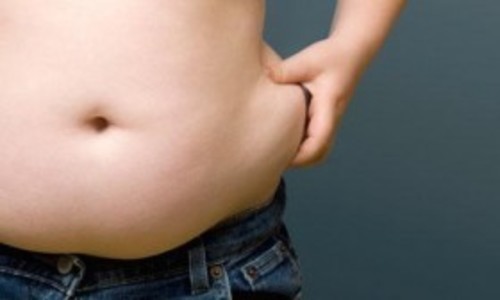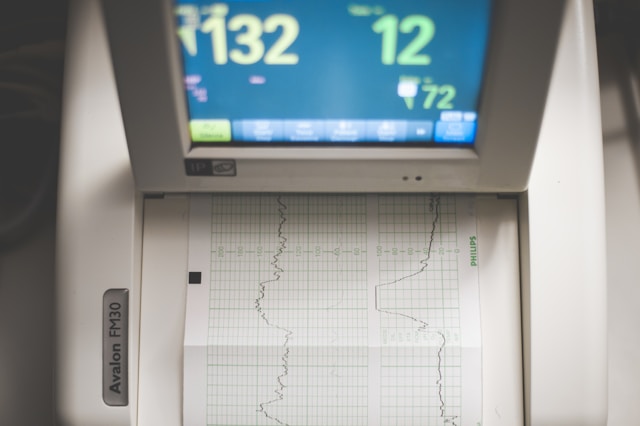The staggering increase in obesity affecting mainly people of the industrially developed world is an indisputable fact. Researchers have put forward a number of ideas of which overeating and/or eating too much sugar/carbohydrates and fats are the most popular. However, orthodox medical research points to some other factors and phenomena starting with a growing incidence of infantile and pediatric hyperinsulinemia.
Infantile hyperinsulinemia is sometimes considered a rare congenital disorder where excessive insulin secretion creates a state of hypoglycaemia – low blood sugar. Severe hypoglycemia in the newborn can lead to a myriad of health issues including severe neurological handicaps and seizures. The symptoms are recognized generally at around six months of age and are believed to develop in 1/50,000 births.
In regions where consanguinity are common the rate may be as high as 1-2/500. However, there are non-genetic, iatrogenic (medically induced) mechanisms of hyperinsulinemia that must be considered also.
An emerging body of evidence suggests a connection between infantile hyperinsulinemia and the administered vaccines, the use of antibiotics and other medical and environmental factors. The timing of infant vaccines, in particular, corresponds closely to the recognition of infantile hyperinsulinemia. Could there be a connection between vaccines and/or antibiotic use and insulin dysregulation in infants and children? Moreover, would this also predispose children to obesity later in life?
Vaccine Induced Hyperinsulinemia?
With the pertussis portion of the DTP vaccine (diphtheria, tetanus and pertussis; and now DTaP [aP=acellular]) pertussis vaccine, there have been longstanding questions regarding safety. In 1978 Hannik and Cohen wrote, “There is a considerable concern about the reactions that sometimes occur in children following the injection of pertussis vaccine. Reactions have been observed and reported since 1933 (1) and range from the slightest minor reactions to status convulsivus resulting in permanent cerebral damage.”
Hannik and Cohen’s review cites a number of studies identifying adverse reactions to the pertussis portion of the vaccine and a relationship to insulin homeostasis, including: Parfentjev and Schleyer (1949), Szentivanyi et al. (1963) Tabachnik and Gulbekian (1968), Tabachnik and Gulbekian (1969). Respectively, these studies dealt with the influence of histamine on the blood sugar level of normal and pertussis vaccine sensitized animals (rats and mice), adrenergic changes due to pertussis [vaccine], insulin, glucose and free fatty acids and encephalopathy following pertussis vaccine prophylaxis. The pertussis vaccine proved to be the principal precipitating pathogen in all cases.
Hannik and Cohen (1978) wrote, “Infants injected with DTP-Polio vaccine with a pertussis component of 16 International Opacity Units per dose showed slight but significant elevation in concentration of plasma insulin and temperature.” They concluded that the phenomena (i.e. the elevation in concentration of plasma insulin and increased temperature) are not interrelated. They suggested that “infants who show serious reactions following pertussis vaccination suffer from a failure to maintain glucose homeostasis.” They also noted, “low blood sugar level and extremely low CFS-glucose concentration have been reported in children who developed convulsions 3 and 36 hours after receiving pertussis vaccine.”
A few years later, Katada and Ui (1981) wrote, “Islet-activating protein is a new protein isolated from the culture of Bordetella pertussis as one of the pertussis toxins. It interacts with islet cells slowly to give rise to striking reversal of alpha-adrenergic inhibition cAMP accumulation in, a consequent insulin release from the islet cells.” In other words, a protein toxin within the pertussis portion of the DTP/DTap vaccine was found to initiate insulin release, providing additional evidence connecting the vaccine to infant hyperinsulinemia.
Deranged Glucose Metabolism in Childhood
Interestingly, Zametkin et al. (1990) demonstrated that adults with hyperactivity of childhood onset suffer derangement of cerebral glucose metabolism affecting the prefrontal cortex and superior prefrontal cortex, the parts of the brain that control attention and motor activity. Could the pertussis protein toxin that activates insulin release identified by Katada and Ui (1981) be responsible for childhood derangement in sugar metabolism and not the consumption of sugar, as such, that is implicated? Even though the authors considered the cause of the altered glucose metabolism unknown, it is clear to me that impaired glucose homeostasis may be a result of childhood vaccination. The consequences of this impairment may then be related to many of the conditions plaguing modern society, including obesity. Indeed, the product insert for Tripedia Sanofi Pasteur DTaP vaccine lists autism (SIDS and other serious reactions) detected during post-marketing surveillance.
From Vaccines to Hyperinsulinemia to Obesity
Hughes (1997) demonstrated a significant increase in both the height and weight of the 5 to 11-year old English and Scottish children and called for an urgent need to realistic intervention to reduce obesity in this population.
Freedman et al. (1997) described secular increases in relative weight and adiposity among children over two decades, from 1973 to 1994 in a biracial community of Ward of Washington Parish, Louisiana, USA.
According to Medical Observer (2005; May 12), “Alarming levels of hyperinsulinism, fatty liver, dyslipidaemia and other complications are present in Australian primary school children with high body mass index (BMI)”.
According to Dunne et al. (2004), “hyperinsulinemia promotes hepatic and skeletal muscle glucogenesis, which decreases the amount of free glucose available in the blood stream and results in suppression of the formation of free fatty acids. Fatty acids do not cross the blood brain barrier and cannot be used by the brain as an energy substrate. The combination of hypoglycaemia, reduced fatty acids availability for cardiac and skeletal muscle metabolism and reduced ketones for cerebral metabolism result in adrenergic and neuroglycopenic symptoms with severe neurological dysfunction. Seizure activity will also manifest. Repeated episodes of severe prolonged hypoglycaemia can result in permanent neurological damage, including developmental delay, mental retardation, and/or focal CNS deficits.”
Although the research groups noted above identified hyperinsulinemia in the studied populations, none investigated the role of the administered vaccines, in the induction of hyperinsulinemia. Given the research highlighted previously, it seems plausible that protein toxins contained in the pertussis vaccine are capable of evoking hyperinsulinemia and by way of association may be responsible for the increasing rates of childhood obesity. To that end, Smith and Furman (1988) wrote, “Pertussis vaccine, pertussis toxin, and the alpha-adrenoreceptor blocking drug phentolamine augment glucose-induced insulin secretion. The present study was carried out to determine the relationship between the action and the ability of these agents to prevent the inhibitory action of adrenaline. Pertussis vaccine augmented glucose-induced secretion in rat islets ex vivo and prevented the inhibitory actions of adrenaline and clonidine.”
Antibiotics and Obesity
Another class of medications – antibiotics – might also be linked to the increase in childhood obesity. Antibiotics are widely prescribed for a great number of conditions. Most children suffer a series of ear infections and lower respiratory and urinary infections in the first year of life after vaccination, as documented by Craighead (1975) and may, as a rule, be given several rounds of antibiotics.
Antibiotics are used prolifically in the animal food industry to enhance the protein (flesh) production and weight in animals. These have the same effect on children as they have on young food animals: antibiotics make them fat and muscular.
Garly et al. (2006) unwittingly documented the fattening effect of antibiotics in children in a developing country. They wrote, “The group that received prophylactic antibiotics had less pneumonia and conjunctivitis and has a significantly higher weight gain in the months after inclusion.”
Conclusion
Although not consistently considered a culprit in the widespread childhood obesity epidemic, iatrogenically impaired infant and childhood glucose homeostasis may be a contributing factor. Administration of DTP/DTaP and possibly other vaccines, alone or together with antibiotics could predispose children to chronic states of impaired insulin metabolism and glucose regulation irrespective of dietary considerations.
References
Kumaran et al. (2010). The clinical problem of hyperinsulinemic hypoglycemia and resultant infantile spasms. Pediatrics; 126(5): e1231-1236.
Hannik and Cohen. 1978. Changes in plasma insulin concentration and temperature of infants after pertussis vaccination. Third International Symposium on Pertussis. (Part 3): 297-299.
Parfentjev and Schleyer. 1949. Influence of histamine on the blood sugar level of normal and sensitized mice. Arch Biochem. 20: 341-346.
Szentivanyi et al. 1963. Adrenaline mediation of histamine and serotonin hyperglycemia in normal mice and the absence of adrenaline induced hyperglycemia in pertussis sensitized mice. J Infect Dis; 113: 86-98.
Tabachnik and Gulbekian. 1969. Adrenergic changes due to pertussis, insulin, glucose and free fatty acids. Eur J Pharmacol, 7(2): 186-195.
Toshiaki Katada and Michio Ui. 1981. Islet-activating protein. J Biol Chemistry; 16 (August 25): 8310-8317.
Zametkin et al. (1990). Cerebral glucose metabolism in adults with hyperactivity of childhood onset. NEJM; 323 (November 15): 1361-1366.
Hughes et al.(1997). Trends in growth in England and Scotland 1972-1994. Arch Dis Child; 76:182-189.
Freedman et al. 1997. Secular increases in relative weight and adiposity mong children over two decades, from 1972 to 1994, residing in Ward 4, Washington parish, Louisiana. Pediatrics; 99(3): 420-426.
Smith and Furman. 1988. Augmentation of glucose induced insulin secretion by pertussis vaccine, phentolamine and benextramine: involvement of mechanism additional to prevention of the inhibitory actions in rats. Acta Endocrinologica; 118:89-95.
Dunaif et al. 1989. Profound peripheral insulin resistance, independent of obesity in polycystic ovary syndrome. Diabetes; 38(9): 1165-1174l
Nestler et al.1990. A direct effect of hyperinsulimemia on serum, sex hormone-biuding globulin levels in obese women with the polycystic ovary syndrome.
Gambineri et al. 2002. Obesity and polycystic ovary syndrome. Journal of International Association for the study of obesity. 26(7): 883-896.
Scott et al. 1997. Characteristics of youth-onset of non-insulin dependent diabetes mellitus and insulin-dependent diabetes mellitus at diagnosis. Pediatrics; 100: 84-91.
Dunne et al. 2004. Hyperinsulinism in infancy. From basic science to clinical diseases. Physiology Rev; 84: 239-275.
Valdyula et al. 2006. Platelet and monocyte activation by hyperglycemia and hyperinsulinemia in healthy subjects. http://informahealthcare.com/doi/abs/10.1080/09537100600760814: 17(8): 577-585.
Burghen et al. 2013. Correlation of hyperandrogenism with hyperinsulinism in polycystic ovarian disease. J Clin Endocrinol and metabolism; 50 (issue 1). Published online July1, 2013,
Takizawa et al. (2001) Gender differences in the relationships among hyperleptinemia, hyperinsulinemia, and hypertension. Clinical and Experimental Hypertension; 23(4): 357-368.
Hussain et al. 2004. Infantile hyperinsulinemia associated with enteropathy, deafness and renal tubulopathy: clinical manifestations of a syndrome caused by a contigous gene deletion located on chromosome 11p. J Pediatr Endocrinol Metab; 17(12): 1613-1621.
Michaud et all; 2014. Acetaminophen-induced liver injury in obesity and non-alcoholic fatty liver disease. Liver Int; 34(7): e171-179. doi.1111
Weiss. 1975. Acetaminophen, a potential pediatric hazard. Pediatrics; 52 (6): 883.
Goulding 1973. Acetaminophen poisoning. Pediatrics; 52(6):883-885.
Craighead 1975. Report of a workshop: Disease accentuation after immunisation with inactivated microbial vaccines. J Infect Dis; 1312 (6): 749-754.
Garly et al. (2006). Prophylactic antibiotics to prevent pneumonia and other complication after measles, community based randomised double blind placebo controlled trial in Guinea-Bissau. BMJ, doi:10.1136/bmj.38989.AE published 23 October 2006.












